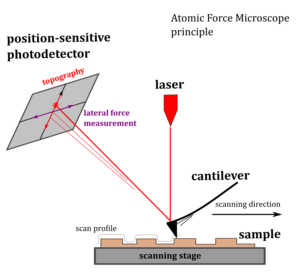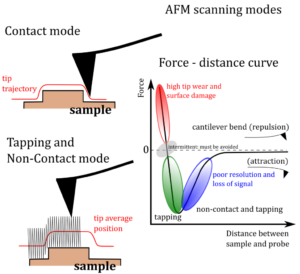The Atomic Force Microscopy relies on scanning a very sharp tip across a surface of interest at a very close proximity or even touching it. The tip “sits” on a thin flexible stripe, usually metal-coated silicon, called a cantilever. The back of the cantilever is illuminated with the laser light, and the reflection is observed on a position-sensitive detector (PSD). Due to a large lever of the light path even smallest bends of the cantilever will result in a measurable reflection travel on the detector. Scanning the sample laterally against the cantilever and monitoring the respective displacement of the reflected light on the PSD, one obtains a height map or topography of the sample. The principle of Atomic Force Microscopy is illustrated below, left (clickable).

